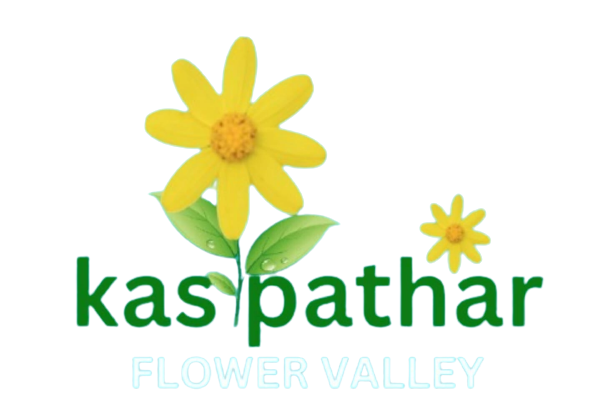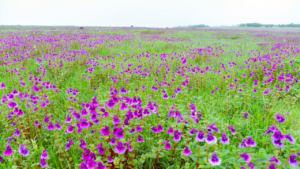Introduction
India, you’ll find Kas Pathar, also known as Kaas Plateau, a biodiversity hotspot of the Western Ghats, or Sahyadri, when you’re in the Satara district of Maharashtra.
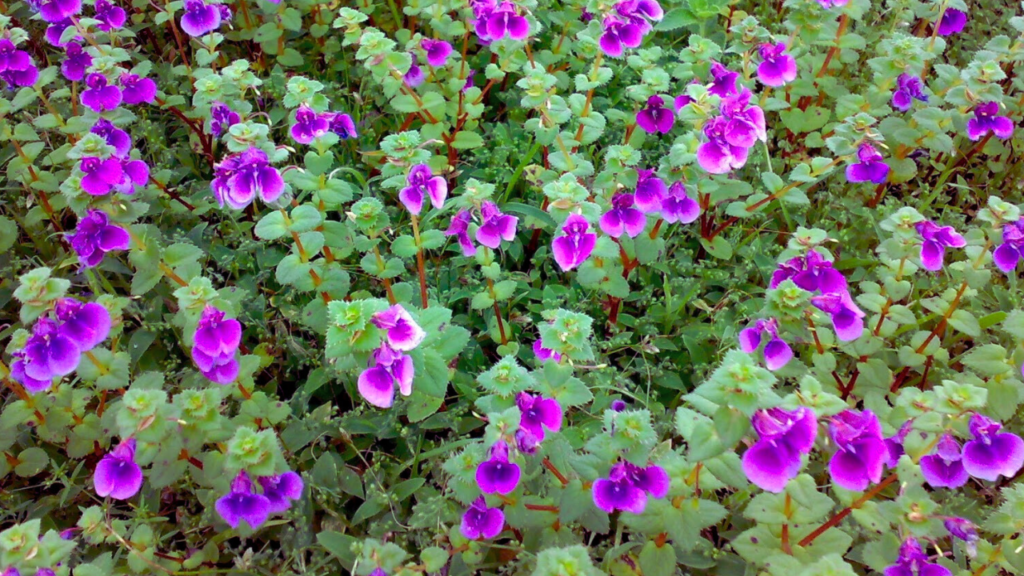
Coming in at an impressive 1600 kilometres long and covering 140,000 square kilometres, the Western Ghats have been designated as a UNESCO World Heritage Site since 2012, and when the World Heritage Committee convened in Saint Petersburg, Russia that year, the Kaas Plateau was one of 39 locations to be given that distinction.
In monsoon season, August to October, Kas Pathar turns into a breathtaking “Valley of Flowers”. Situated at 17º42’. 17º45’N and 73º47’, 73º56’E, at 1200 meters elevation and covering approximately 10 square kilometres, it is one of the most popular natural attractions in the area.
The Biodiversity Heritage of Kas Pathar today
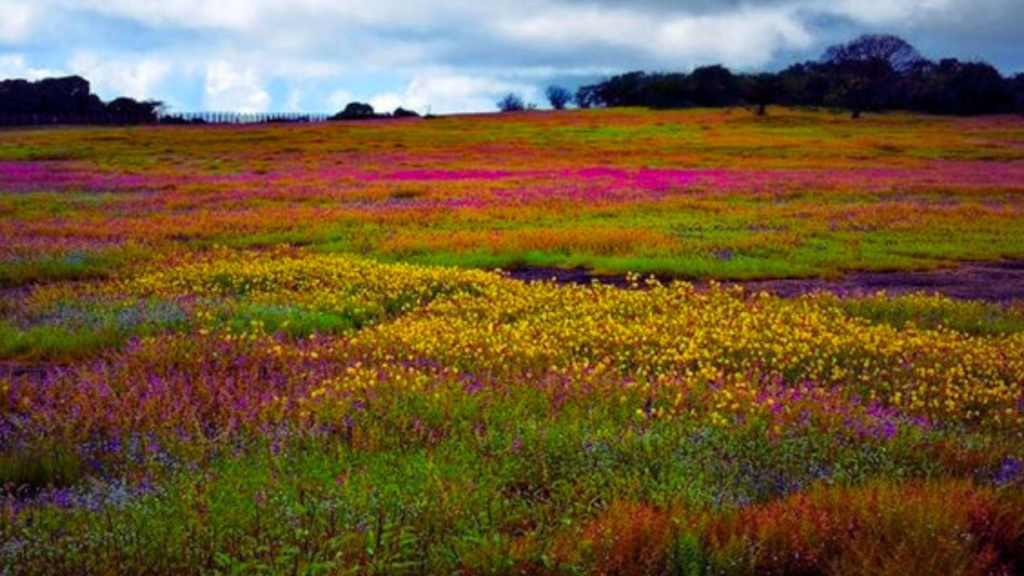
When referring to the Kas Pathar plateau there are two origin stories, one being that the name ‘Kas’ is derived from the local Kaasa tree that is prevalent in the surrounding forests, and the other is that ‘Kaasa’ is essentially a word for a lake in the regional language and the large lake on the plateau might be why it’s called that.
Well-known for its unique vegetation and fauna, Kas Pathar has more than 850 species of flowering plants, 624 of which are listed in the Red Data Book 2, and out of these 39 species can only be found here.
Timeline of Kas Pathar today since its inscription as a World Natural Heritage Site

2012-The Kaas plateau was recognised by UNESCO as a World Natural Heritage site, along with 39 other locations in the Western Ghats.
2013-The Forest Department took initiatives to improve the villages by installing solar lamps, LED street lights, water heaters, LPG gases, halogen bulbs, and computers.
2014- The Maharashtra Tourism Development Corporation (MTDC) worked with the locals to introduce the concept of homestays.
2015- Discussions on civil issues, resulting in the establishment of an Information Centre, a medical centre, and basic transport infrastructure.
2016 -A joint management forest committee was formed, consisting of representatives from four member villages and a Forest Division office bearer from Satara.
In 2017, online booking became mandatory in 2017, with a limit of 3,000 visitors per day.
2018- Measures were taken to prevent damage caused by cattle trampling, including the installation of fences, which were later removed in 2022 due to technical issues.
Finally, from 2020 to 2023, exciting activities such as night jungle safaris, jeep safaris, and sightseeing(Kas Pathar darshan)tours of Kas Pathar today were introduced.
Tourism in Kas Pathar today:
The Kaas Plateau has seen a huge number of tourists, when Kas Pathar was designated a UNESCO World Heritage Site back in 2012. In response to this, the Committee made a bespoke website for tourists, allowing them to get all the necessary information and sign up for their trips, and from now on, Saturday, Sunday and public holiday bookings are required to be made online.
Well-known ticket sales are allowed on the website, but they’re capping the daily number of visitors at 3,000. If there’s a large crowd, or traffic jams occur, they’re basically herding people within the city limits of Satara with help from the police and volunteers.
Revenue Allocation:
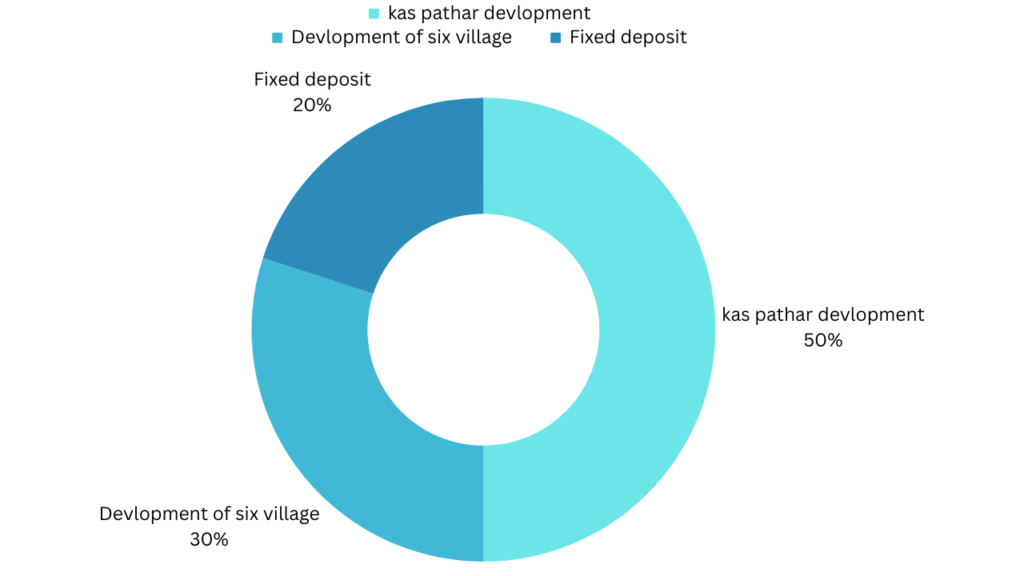
The money collected from visitors throughout the season is utilised for the upkeep and wages of the villagers who work there in different capacities. The overall income obtained is divided as follows:
1- 50% of the total income is allocated for the improvement of Kas Pathar today.
2- 30% of the total income is utilised for the progress of six villages, which primarily involves repairing roads and providing water supply. It is also used for managing and meeting the infrastructure requirements of schools in these villages.
3- 20% of the total income is saved as a fixed deposit in the IDBI Bank.
Management of Kaas Plateau:
Regarding the management of Kas Pathar, the Forest Department has teamed up with the Joint Forest Management Committee(JFMC) and the local community to protect, preserve and take care of the area. Kas Pathar is divided into six manageable sections, each with a designated leader.
Water supply: To quench the thirst of its inhabitants, the area has a separate team that takes care of all water-related activities, and brings in water tankers from Satara to supply clean water for the toilets that get busy during the peak tourist season.
Waste management: To further contribute to the hygiene and cleanliness, a team has been appointed for the handling of solid and sewage waste disposal.
Security (Day and Night Shift): The area is well-guarded, day and night, by a group of 12 people covering a 1,800 hectares area. The Forest Department wants to also support the local community, for instance, by employing them as tourist guides or in the maintenance team and has, therefore, encouraged the local people to grab these career opportunities.
Parking: A problem parking solution lies about 500 meters away, where there is a designated parking space, or if you don’t feel like walking you can hire a mini bus arranged by the State Transport for a fraction of the cost
Office: A temporary facility has been set up for administrative purposes, record-keeping, and managing online booking data.
Community Development on Kas Pathar today
As the JFMC received a proposal from the Gram Sabha of six villages they allocated 30% of their revenue towards their development. Every year, before the start of each season, the villagers submit their employment applications, and according to their skills and aptitudes they are given very specific jobs.
Non-profit organisations have been running workshops for the women in these villages, teaching them the art of producing homemade foodstuffs, and giving them a new way to earn money.
Well-known problems such as lack of year-round employment and underdeveloped tourist sites have been tackled by the JFMC in partnership with the community. They have also provided designated parking spaces for tourists and got the State Transport Department to send mini-buses to the site of the flowers, and this has knocked out a massive 80 to 90% of pollution.
Progress achieved by JFMC Kas Pathar today
1.When planning your visit to the plateau on Saturdays, Sundays and public holidays you’ll need to book your tickets online. Coming to the counter won’t cut it anymore, but it’s still an option, but bear in mind that no more than 3,000 visitors are allowed in each day.
2. There are bins located all over the area and toilets on the plateau.
3. The plateau is equipped with 32 water holes specifically designed for animals to quench their thirst.
4. They’ve implemented walkie-talkies to manage the crowds and make sure the car park doesn’t get out of hand..
5. To preserve the natural beauty of the plateau, vehicles are not permitted. Instead, controlled nature trails are conducted on designated pathways within the tourist zones.
Challenges yet to overcome:
1 One of the biggest hurdles is the lack of fixed security and checkposts on some of the routes, making it difficult to count the number of tourists, when heading to the Kaas Plateau.
2. During the off-season, there is a lack of employment opportunities.
3. Coming to the plateau in the off-season also means there isn’t much work available. Well-known is the recent boom in tourism which has put the plateau under pressure and not just that, the towns and villages around it too.
4. The mountainous terrain and general lack of a proper waste management system has made the problem of food waste, plastic bottles, plastic plates and bags on Kaas Lake particularly acute.
Kas Pathar online booking contact number
You’ll need to pay an entry fee of Rs 150 per person, when entering Kas Plateau in 2023.
- Coming from an online booking, make sure to print out your ticket as mobile screens won’t be accepted. Kids under twelve years old get in for free.
- School and college students can get a discounted rate of Rs 40 per person, but need a letter from their school or college principal to do so, this facility isn’t available on weekends though.
- If you want to take a bike ride from Rajmarg to Kumudini Lake the fee is Rs 50 an hour, and if you want a guided tour, it’s Rs 200 an hour and you’ll get one guide for every ten people, and remember that you need to pre-book both of these activities.
If you have any queries or need further information, you can contact the following people: –
- Somnath Jadhav: 9422592035
- Dattatray S. Kirdat: 8698993553
- Dnyaneshwar Akhade: 8600523113
- Vitthal Kadam: 8459876484
Responsible Tourism and Preservation for Kas Pathar today:
With respect to the village in the area surrounding the Kaas Pathar, the residents should be aware of the unique and breathtaking landscape of this natural formation. They should be motivated to preserve this ecosystem and refrain from causing any damage. In the area of waste management, this village also has serious problems and needs to introduce an efficient system. Given that, and the massive impact of disposable items, one possible remedy would be to declare Kaas a “no single-use plastic zone”.
Why is the plateau named ‘Kaas’?

One story is that Kas Pathar today got its name from the Kaasa tree, which is found in the surrounding forests. Another story is that ‘Kaasa’ also means a lake in the regional language, and the presence of a major lake on the plateau could have influenced its name.
Is a sanitisation facility available in Kas Pathar Satara?
The Joint Forest Management Committee has provided temporary toilet dustbin facilities.
Has the entrance fee to Kas Plateau been changed?
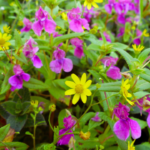
Since 2023, the entry fee on Kas Plateau has been revised by the Joint Forest Management Committee. Now it is 150 Rs per person
